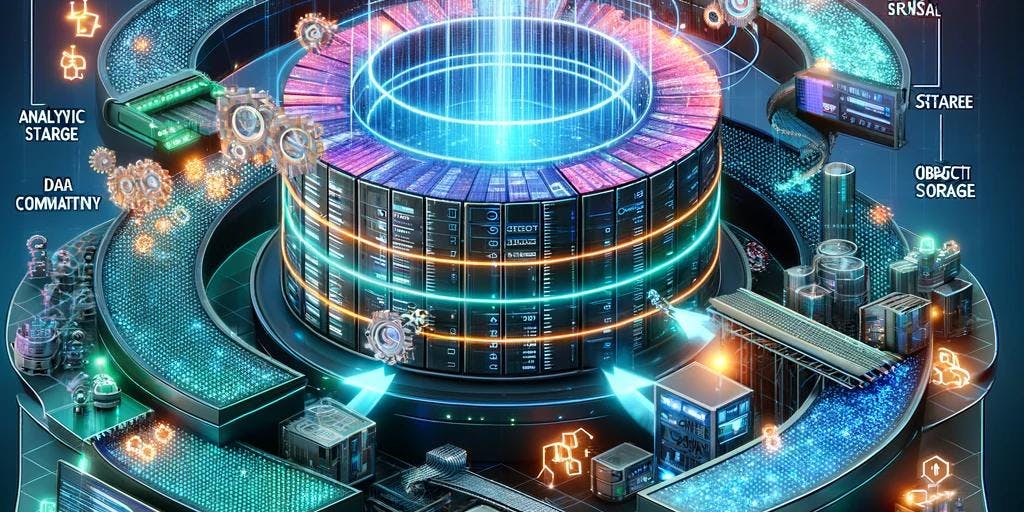Building Custom Query Engines: A Journey of Discovery and Innovation



Introduction
Building custom query engines has been an incredible adventure. From fetching data from various sources to indexing and creating schemas, the project encompassed a wide array of skills and technologies. Here's a glimpse into the stages, challenges, and triumphs of developing multiple query engines for my unique data sets.
Stage 1: Defining the Vision
The project began with a clear vision: to create customized query engines that could handle different data sources such as blog posts, social media content, video metadata, and an extensive knowledge base.
Stage 2: Fetching Data
The engines were designed to fetch data from various platforms, including LinkedIn, Facebook, Twitter, and my personal blog. By leveraging APIs, I could seamlessly gather the information needed for further processing.
Stage 3: Creating Supabase Tables
Supabase played a crucial role in storing the fetched data. I created specific tables for different content types, ensuring a streamlined and organized database structure.
Stage 4: Indexing into Weaviate
The engines were further enhanced by indexing the data into Weaviate, a powerful tool that allowed for efficient search and retrieval. Custom schemas were created for each data type, allowing for precise and relevant results.
Stage 5: Building Video Metadata Engine
One of the highlights of the project was the development of a video metadata engine. By utilizing automatic metadata feature extraction, I was able to create and upsert a Supabase table, followed by indexing into Weaviate with an img2vec vectorizer.
Stage 6: Handling Authorization and Security
Security and authorization played a pivotal role in the development process. Connecting to platforms like LinkedIn required specific configurations, redirect URLs, and adherence to platform-specific rules. I leveraged OAuth2, ensuring that my custom engines communicated securely and efficiently with the respective platforms.
Stage 7: Exploring the Power of AI and Vectorization
Utilizing advanced AI techniques and vectorization, I was able to enhance the search capabilities of my engines. Weaviate's img2vec vectorizer, for instance, added a layer of intelligence to the video metadata engine, allowing it to understand and process visual content.
Stage 8: Knowledge Integration
The knowledge base engine's significance extended beyond mere data indexing. It represented an amalgamation of my research, insights, and collected wisdom. From motion databases to intricate notes on computer science, this engine became a digital extension of my intellectual pursuits.
Stage 9: Challenges and Solutions
The development journey was not without its hurdles. I faced import errors, complex authorization processes, and the challenge of scheduling automatic updates. However, these obstacles led to creative problem-solving, fine-tuning, and optimization.
Stage 10: Reflection and Future Endeavors
Looking back, this project was a profound learning experience. It was not merely about coding or data management; it was a harmonious blend of creativity, technology, and personal passion.
The engines, each with its unique characteristics and functionality, are now an integral part of my daily workflow. They have transformed the way I interact with my data, making it more accessible and meaningful.
What Lies Ahead
The journey doesn't end here. There are always new horizons to explore, new challenges to conquer, and new knowledge to integrate.
I'm currently exploring the possibility of deploying these engines as Lambda functions, making them even more scalable and versatile. Additionally, I'm keen on fine-tuning and expanding these engines, perhaps by integrating more social platforms or diving deeper into AI and machine learning techniques.
Final Thoughts
Building custom query engines for my unique data needs has been an exhilarating journey filled with challenges, learning, and growth. From connecting various data sources to crafting intelligent search capabilities, this project has been a testament to the power of innovation and determination.
I invite you to explore, innovate, and challenge yourself, just as I did. The road to discovery is filled with surprises, and who knows what you might uncover along the way!
Happy coding and exploring! 🚀

